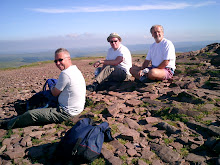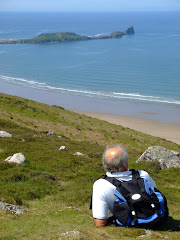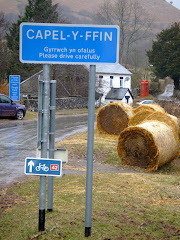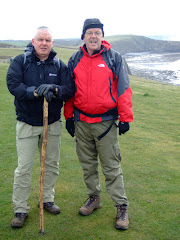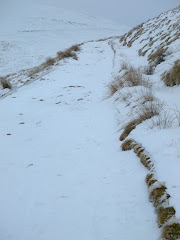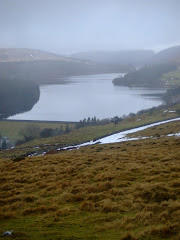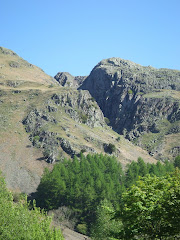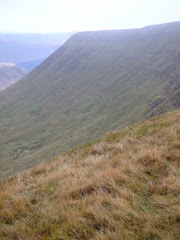
A local walk starting from the car park of the Brecon Mountain railway, during a balmy late Summers evening through the dis-used limestone quarries just north of Pant.
The area is now used extensively for climbing & abseiling instruction and we witnessed two groups working in different parts of the site. It is also used for motor-cross events.

Mike pointed out the entrance to this forty foot 'chimney' which his daughter squeezed through as part of a pot-holing exercise for her Duke of Edinburgh's Gold Award. The exit at the top of the narrow chimney is shown below!

We also had some great views of Pen-Y-Fan at dusk, which was ten miles away as the crow flies.

This is all that remains of the old castle over-looking the golf course. Originally built around 1270 by the Earl of Gloucester and Lord of Glamorgan, Gilbert de Clare. It's construction at the furthest extreme of the boundary of his land demonstrates that he was probably planning raids into Vaynor with the intention of attempting to take lands from Humphrey de Bohun, Earl of Hereford and Lord of Brecknock.

It is thought that the castle was never properly finished. The violent dispute between these two Earls over the construction of Morlais Castle caused Edward I (Longshanks) to intervene and put both in the Tower of London. The King himself did not want Morlais Castle to be an important stronghold on the boundary between Glamorgan and Brecknock and he stamped his Royal control over these two powerful Norman Lords.

When the castle was excavated in 1833 by Lady Charlotte Guest (who translated The Mabinogion into english), coins from the reign of Edward I were discovered. Morlais was also excavated by the amateur Victorian archaeologist, G.T. Clark of the Dowlais Works.

We concluded the walk by taking a route through the golf course watching the last pair of the First team drive off the 18th tee in a league match before we finally adjourned to the Quarrymans Arms on Pant Road for refreshments.





































